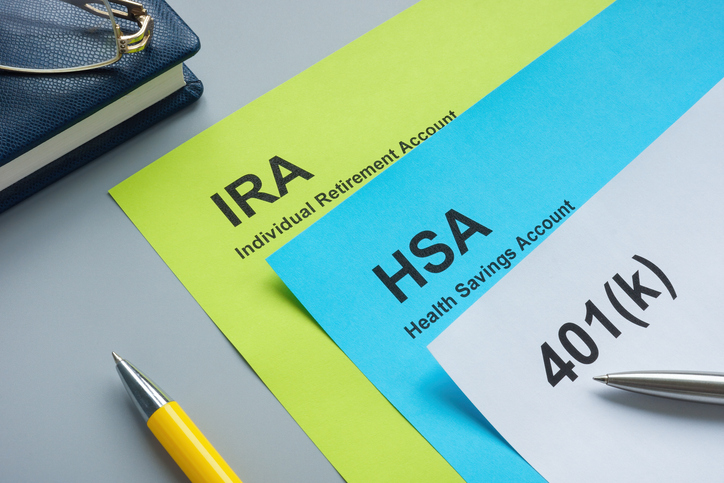Medicaid issued approximately $1.1 trillion in improper payments over the past decade, double the agency’s stated amount, the Paragon Health Institute estimates.
“Cracking down on improper payments is a necessary first step that could provide hundreds of billions of dollars in Medicaid savings for federal taxpayers,” states the March 3 policy brief based on examination of eligibility checks from government audits.
Audits included state eligibility determinations in two of the past 10 years, the document states.
“In those two years that did include meaningful, complete audits of state Medicaid programs, improper payment rates exceeded 25 percent,” the paper states. “Applying a 25 percent improper payment rate across the $4.3 trillion of federal Medicaid spending from 2015 and 2024 yields roughly $1.1 trillion in federal Medicaid improper payments over the past decade.”
Obamacare, which included expanding Medicaid to the able-bodied population, went into effect in 2014. In the early years of expansion, the Obama administration stopped including state eligibility determinations, “likely because such audits may have conflicted with [President Barack Obama’s] attempts to build public support for the law,” the paper states.
‘Essentially Money Laundering’
During a February 12 panel discussion hosted by the Cato Institute, Paragon President Brian Blase said the federal government pays for at least half of states’ Medicaid spending, and for many recipients it can reach 100 percent.
“States don’t actually need to come up with their share of the [Medicaid] spending,” said Blase. “They have been incentivized to create financial gimmicks that give the appearance of an actual expenditure, … so the federal government is reimbursing states for what is essentially money laundering.”
Additionally, there is no cap on how much states can spend on their programs.
“If you are going to have an open-ended reimbursement program, you have to make sure the expenditures are legitimate,” said Blase.
Congress is considering giving states block grants to rein in Medicaid spending, which now exceeds $880 billion a year.
‘Provider Tax’ Scam
In addition to failing to review eligibility determinations, states use other schemes to maximize federal reimbursements.
One scheme that got its start before Obamacare went into effect is the so-called “provider tax” that states impose on health care providers, who then submit the tax to the state as a Medicaid expense. After the federal government reimburses the state for the expense, the state often gives the money back to the provider.
“It is not a ‘tax’ if the recipient develops the tax and lobbies the government to assess it on them,” said Blase.
The scheme has been no secret, but Congress and presidents have failed to end it, said Blase. The practice has gotten so out of hand that states are now ordering Medicaid managed care plans to reimburse hospitals at commercial rates for their services—two to three times what Medicare pays.
These “direct payments” should be capped at what Medicare pays or lower, said Blase.
“Health care providers should not be making windfall profits through a welfare program,” said Blase.
Ninety Percent Match
The 90 percent “match rate” the federal government pays to cover able-bodied enrollees is another problem, Blase told the audience. The government pays a 50 to 75 percent “match rate” for Medicaid’s traditional population.
“This makes no sense,” said Blase.
Paragon proposes transitioning the able-bodied population who earn between 100 and 138 percent of the federal poverty level into the Obamacare exchanges over the next 10 years and give that group a premium tax credit. Health coverage would remain the same, but because all Medicaid enrollees would be reimbursed at the same level, there would be no incentive to favor one group over another.
“We think this reform will save over half a trillion dollars over the next decade,” said Blase.
Incentives to Overspend
Congress should also address the Medicaid funding formula known as the Federal Medical Assistance Percentage (FMAP), which was designed to help poorer states cover mandatory benefits, says Blase. FMAP considers average per capita income and applies a multiplier to even out federal reimbursement. Blase showed the audience a graph demonstrating the formula is doing the opposite of what was promised.
“We are transferring far more money to wealthier states that have grown more profligate Medicaid programs, than poorer states,” said Blase.
Under the formula, Medicaid is prohibited from reimbursing less than 50 percent. Blase said to get back to the original intent of FMAP, the 50 percent floor should be lowered for wealthier states.
Obamacare Enrollment Fraud
Wasteful government health care spending is also occurring in Obamacare plans, as increased federal subsidies have pushed them close to the no-cost care that Medicaid provides, says Blase.
The American Rescue Plan Act and the Inflation Reduction Act changed the formula for Obamacare insurance plans to allow more people to qualify.
“If you think of the value proposition here, you’re expanding coverage to people who don’t need to get any financial value from the product,” said Blase.
In addition, enrollees must predict their household income for the following year to qualify for the subsidies, which has incentivized signups, said Blase. Blase showed the audience a chart indicating signups far exceed the number of people in the states who meet the income guidelines for the nearly free health care.
“Government programs should not be operating like this,” said Blase.
‘Just Let Them Expire’
The enhanced subsidies are supposed to expire at the end of 2025.
“Congress should do no harm here, and they should just let them expire,” said Blase.
Another option would be to allow low-income Americans to use a portion of their Obamacare subsidy as a contribution to a health savings account, Blase said.
AnneMarie Schieber ([email protected]) is the managing editor of Health Care News.




